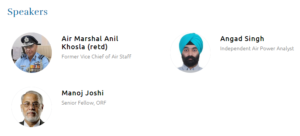NEWS-1 (ISRAEL HAMAS WAR)
Israel’s military said it had resumed combat against Hamas in Gaza on Friday after accusing the Palestinian militant group of violating a seven-day temporary truce by firing toward Israeli territory.
VIEWS
- The seven-day pause, which began on Nov. 24 and was extended twice.
- The terms of the cease-fire were in favour of Hamas. It gives some respite to the Israeli government from both domestic (to bring back the hostages safely at the earliest) and international (to regulate the extent of force and to allow humanitarian aid) pressure.
- The cease-fire facilitated the entry of humanitarian aid into the shattered coastal strip. But deliveries of food, water, medical supplies, and fuel remain far below what is needed.
- 105 Israeli hostages held in Gaza were exchanged for 240 Palestinian prisoners.
- Qatar and Egypt have been making intensive efforts to extend the truce.
- Israel has sworn to annihilate Hamas, which rules Gaza, in response to the Hamas attack on 07 Oct. Israel is preparing to turn the focus of its operation to southern Gaza after its seven-week assault to the north.
- The cease-fire to some extent has reduced the chances of the escalation of the conflict.
- Military force is not a permanent solution to the complex problem.
- The two-nation theory needs to be implemented earnestly.
NEWS-2: RUSSIA UKRAINE WAR
Russian Defence Minister Sergei Shoigu chaired a roundtable meeting with military officials in Moscow on November 21, 2023. He said that Russian troops are advancing on all fronts in Ukraine. They are occupying and expanding their zones of control.
It was announced that Russia has taken control of Khromove, a small village on the outskirts of Bakhmut in Ukraine’s eastern Donetsk region.
VIEWS
- The war started in Feb 2022. The intensity has been varying.
- In 2023 the frontline has barely shifted. Both sides keep claiming success.
- The latest major flashpoint is the war-battered industrial town of Avdiivka.
- It is likely to be a long-drawn affair. Both sides are adamant and gradually weakening themselves.
- Israel Israel-Hamas war has taken the spotlight away from it.
NEWS-3: EUROPE’S DEFENCE SPENDING
The Annual Conference of the European Defence Agency (EDA) took place in Belgium in hybrid mode on 30 Nov 23.
Defence companies, militaries and EU chiefs all agreed that Europe is sorely lacking, especially in what is available to support Ukraine.
Many participants pointed to issues from financing to interoperability to research and development.
VIEWS
- Europe is ploughing billions into its defence industry, with record sums being spent since Russia’s all-out invasion of Ukraine.
- Military spending in the European Union has hit a record 270 billion euros ($295 billion) this year.
- Moscow has announced a massive 68 per cent hike in its military spending for 2024 (almost a third of all of Russia’s government outlays).
- The EU’s 27 member states spend on average 1.5 per cent of their country’s economic output. NATO’s target is two per cent for its members (22 of which are also EU member states).
- The United States, in contrast, spends 3.5 per cent of its already higher GDP on defence.
- Out of all this, maximum gainers are the Defence and arms industry.
- Collective security is valid, and interoperability is very important.
NEWS-4: SPACE WARFARE IN KOREAN PENINSULA
A SpaceX Falcon 9 carrying Seoul’s first domestically made reconnaissance satellite launched from the Vandenberg Space Force Base in California at 10:19 a.m today (01 Dec 23).
Seoul’s satellite is set to orbit between 400 and 600 kilometer above the earth and is capable of detecting an object as small as “30 centimetres” (11.8 inches), according to the Yonhap news agency.
VIEWS
- Two weeks back, North Korea had successfully put its own spy satellite into orbit. This launch of the “Malligyong-1” was Pyongyang’s third attempt at putting such a satellite in orbit, after two failures in May and August.
- Seoul plans to launch four additional spy satellites by the end of 2025 to bolster its reconnaissance capacity over the North.
- Until now, South Korea relied heavily on US-run spy satellites.
- While the South has “succeeded in the launch of a military communications satellite, it has taken much longer for a reconnaissance satellite due to higher technological hurdles.
- Maybe it is the beginning of space race in the Korean peninsula.
- Space warfare (a natural extension of air warfare) is the new domain of warfare.
Suggestions and value additions are most welcome
For regular updates, please register here:-
References and credits
To all the online sites and channels.
Disclaimer:
Information and data included in the blog are for educational & non-commercial purposes only and have been carefully adapted, excerpted, or edited from sources deemed reliable and accurate. All copyrighted material belongs to respective owners and is provided only for purposes of wider dissemination.


